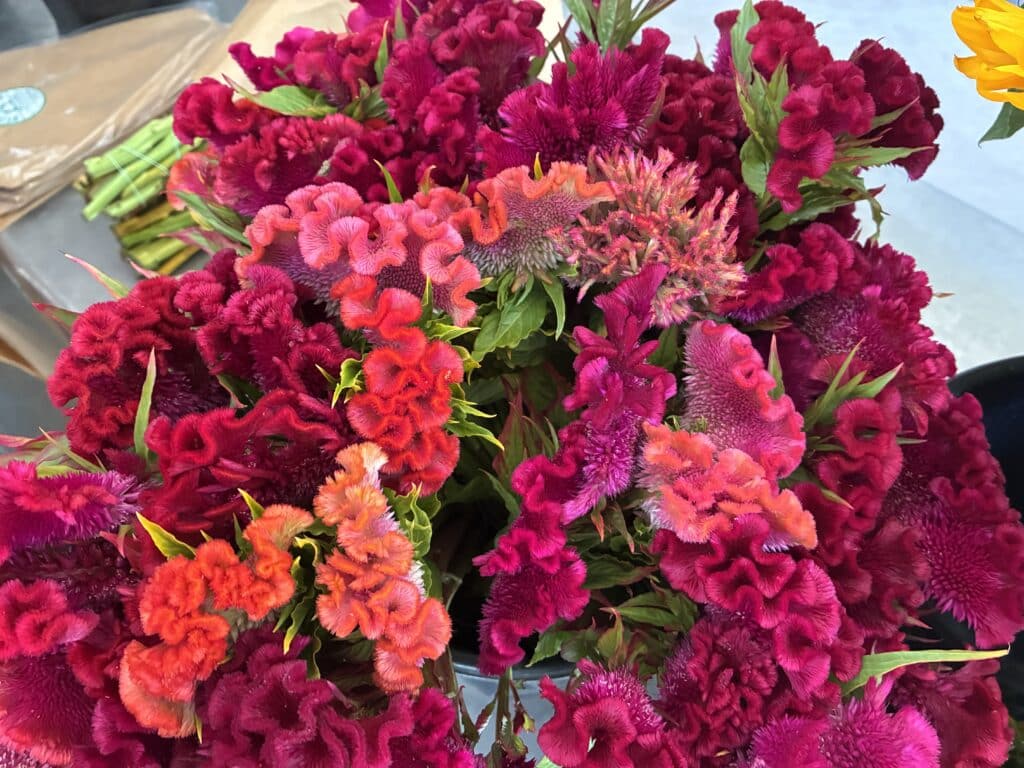
As mentioned last week, this is the time of year to plant our fall crops. So far, we’ve direct seeded beets, carrots, and spinach (more about that process here), and have transplanted broccoli and leeks, with many more to come. These cool weather crops don’t like the heat, but we have to start them now. By the end of September, summer crops will be done or winding down and we need a new supply of produce to harvest for you, so we’ll be planting and transplanting a LOT over the coming two months.
August is always hot, and September too. So how do we start growing cool-season crops during triple-digit summer days? It’s all about moisture management.
Seeds need a moist and warm (but not too warm) environment to germinate. They also need moisture. Too much water will rot the seeds, but they’ll fry if there’s too little. Water also helps with temperature control. Optimal carrot germination temperature is in the mid-70s, but if it’s over 100 degrees, as it’s been the past few days, the soil is far above that optimal temperature for all but a few hours. We also use floating row cover, the white, lightweight fabric in the photo above. Row cover is most often used in colder months to trap in heat and protect plants from frost, but a lightweight summer version reduces the intensity of the sun, similar to what the shade cloth does for our peppers. The particularly finicky carrots get the row cover, but the other direct seeded crops just get water.
Another “trick” is that we don’t grow our own fall transplants – it’s too hot here and we have too much going on. There are too many tomatoes and melons to harvest to carefully monitor greenhouse conditions and not bake the plants. They arrive at the farm ready to be transplanted, giving us a jump start on the season. Even if they’ve been “hardened off” (meaning exposed to conditions outside the greenhouse for a few days) the transition from the greenhouse to the real world conditions of the field can be rough. The term, “transplant shock” refers to the process these plants go through during their first two weeks in the field when they often look pretty sad and stressed. We water them a lot but it’s always hard for the little plants with their small roots, to keep up with evapotranspiration rates.
We know that we’re putting these seeds and transplants through suboptimal conditions. But in order to smoothly transition from summer to fall produce, we must plant during this hot, difficult time with big temperature swings and decreasing hours of sunlight. It’s a risky endeavor and very easy to quickly lose a planting. The irrigation team is in constant demand and their work is really important. Experience helps to successfully navigate this risky time, but experience only goes so far.
With forty years of experience, and these “tricks” in hand, we’ll keep chugging along and planting. We can’t wait out the heat. The longer we wait, the further back the first harvest date will be for all those exciting fall crops. Good thing we’ve got cooler days ahead in the forecast!
Elaine Swiedler, CSA Manager + lots of help info from Andrew Brait! Thanks!

